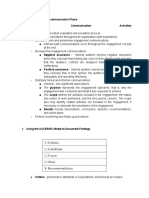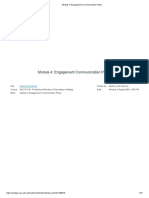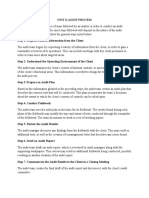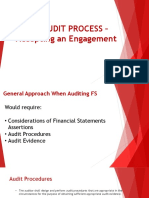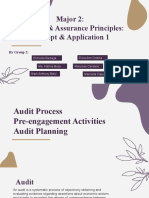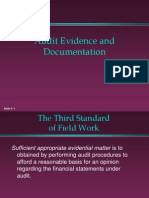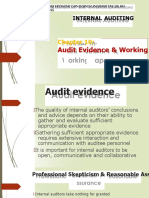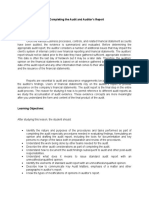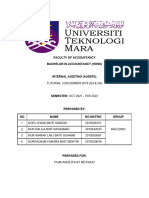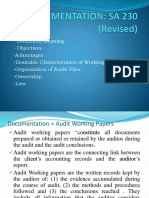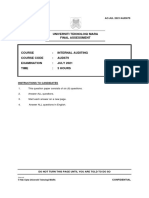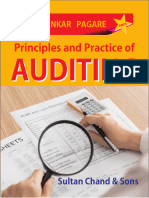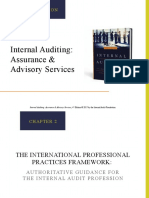0% found this document useful (0 votes)
51 views2 pagesModule 3 Reviewer
This document outlines the key phases and activities of an audit engagement performance:
1) Evidence is gathered through applying audit procedures like making inquiries, observing operations, and inspecting documents. All evidence gathering and procedures performed must be thoroughly documented.
2) The audit evidence is evaluated and conclusions are reached, requiring significant professional judgement.
3) Observations are documented by comparing criteria to conditions and identifying causes and effects. Recommendations aim to close gaps between criteria and conditions.
4) Extensive interaction with auditees is needed to gather sufficient evidence. Working papers provide complete documentation and support all audit outcomes.
Uploaded by
Lorence IbañezCopyright
© © All Rights Reserved
We take content rights seriously. If you suspect this is your content, claim it here.
Available Formats
Download as DOCX, PDF, TXT or read online on Scribd
0% found this document useful (0 votes)
51 views2 pagesModule 3 Reviewer
This document outlines the key phases and activities of an audit engagement performance:
1) Evidence is gathered through applying audit procedures like making inquiries, observing operations, and inspecting documents. All evidence gathering and procedures performed must be thoroughly documented.
2) The audit evidence is evaluated and conclusions are reached, requiring significant professional judgement.
3) Observations are documented by comparing criteria to conditions and identifying causes and effects. Recommendations aim to close gaps between criteria and conditions.
4) Extensive interaction with auditees is needed to gather sufficient evidence. Working papers provide complete documentation and support all audit outcomes.
Uploaded by
Lorence IbañezCopyright
© © All Rights Reserved
We take content rights seriously. If you suspect this is your content, claim it here.
Available Formats
Download as DOCX, PDF, TXT or read online on Scribd
/ 2


